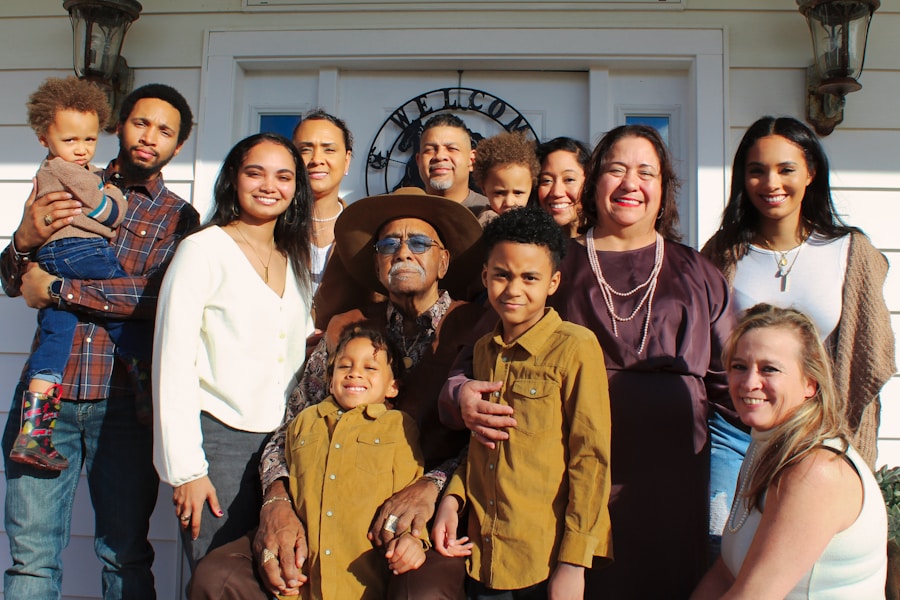Transitioning from a hospital or care facility back to home can be a challenging and overwhelming experience for both the individual returning home and their loved ones. It is important to understand that this transition process can be a gradual one, and it may take time for the returning individual to fully adjust to being back in their familiar environment. There may be physical, emotional, and practical adjustments that need to be made, and it is important to approach the transition with patience and understanding.
It is also important to recognise that the transition process can be different for each individual, depending on their specific needs and circumstances. Some individuals may require ongoing medical care or rehabilitation, while others may need support with daily activities or emotional adjustment. By understanding the unique needs of the returning individual, loved ones can better support them through the transition process and help them feel more comfortable and secure in their home environment.
Creating a Welcoming and Comfortable Environment
Creating a welcoming and comfortable environment is essential for supporting the returning loved one through the transition process. This may involve making physical adjustments to the home, such as installing handrails or ramps, or rearranging furniture to accommodate mobility aids. It may also involve creating a calm and soothing atmosphere, with familiar belongings and comforting items that can help the individual feel more at ease.
In addition to physical adjustments, it is important to consider the emotional and psychological aspects of the home environment. Loved ones can help create a welcoming and supportive atmosphere by being present and available, offering reassurance and encouragement, and providing opportunities for social interaction and engagement. By creating a warm and inviting space, loved ones can help the returning individual feel more at home and supported during the transition process.
Communicating Effectively with the Returning Loved One
Effective communication is key to supporting a returning loved one through the transition process. It is important to listen to their needs and concerns, and to provide opportunities for them to express themselves and communicate their preferences. This may involve having open and honest conversations about their experiences, fears, and hopes for the future, and actively listening to their thoughts and feelings without judgement.
In addition to verbal communication, non-verbal cues and body language can also play a significant role in effective communication. Loved ones can show their support through gestures of affection, such as hugs or holding hands, and by being attentive and responsive to the individual’s emotional cues. By communicating effectively and empathetically, loved ones can help the returning individual feel heard, understood, and supported during this challenging time.
Providing Emotional and Practical Support
During the transition process, it is important to provide both emotional and practical support to the returning loved one. This may involve offering reassurance and encouragement, providing a listening ear, and offering practical assistance with daily activities or medical care. Loved ones can also help the individual navigate any emotional challenges they may be facing, such as anxiety, depression, or feelings of isolation.
Practical support may include helping with household chores, meal preparation, or transportation to medical appointments. It may also involve coordinating care services or arranging for additional support from healthcare professionals or community resources. By providing both emotional and practical support, loved ones can help ease the transition process and ensure that the returning individual feels cared for and supported in their home environment.
Respecting Independence and Autonomy
While providing support during the transition process, it is important to respect the returning individual’s independence and autonomy. This may involve encouraging them to participate in decision-making processes, allowing them to take an active role in their own care, and respecting their preferences and choices. It is important to strike a balance between offering support and allowing the individual to maintain a sense of control over their own life.
Respecting independence and autonomy also means acknowledging the individual’s strengths and capabilities, rather than focusing solely on their limitations or challenges. Loved ones can help empower the returning individual by recognising their abilities and encouraging them to engage in activities that bring them joy and fulfilment. By respecting independence and autonomy, loved ones can help the individual feel more confident and empowered as they navigate the transition process.
Addressing Any Health or Care Needs
During the transition process, it is important to address any ongoing health or care needs that the returning individual may have. This may involve coordinating with healthcare professionals to ensure that the individual receives appropriate medical care, rehabilitation services, or therapy. It may also involve making adjustments to the home environment to accommodate any specific care needs or mobility challenges.
In addition to addressing physical health needs, it is also important to consider any emotional or psychological care needs that the individual may have. This may involve providing access to counselling or mental health support services, or offering opportunities for social engagement and emotional support. By addressing both physical and emotional care needs, loved ones can help ensure that the returning individual receives comprehensive support during the transition process.
Building a Support Network for Continued Care
Finally, it is important to build a support network for continued care beyond the initial transition period. This may involve connecting with community resources, support groups, or healthcare professionals who can provide ongoing support and assistance. It may also involve involving other family members or friends in the care process, so that the returning individual has a strong network of support around them.
Building a support network for continued care can help ensure that the returning individual receives ongoing support as they adjust to being back home. It can also provide peace of mind for loved ones, knowing that there are resources and individuals available to help provide care and assistance when needed. By building a strong support network, loved ones can help create a sustainable care plan that meets the ongoing needs of the returning individual.
